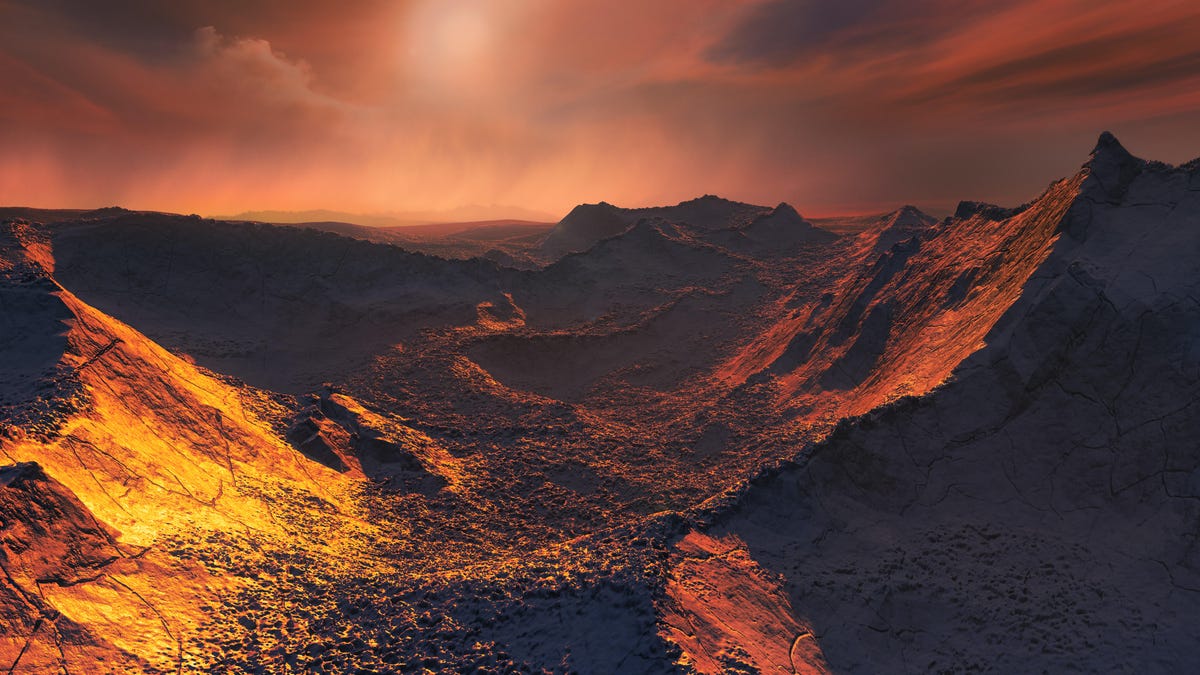Frozen super-Earth spotted around second nearest star system
It's called Barnard's star b, and while it might not be too hospitable, it's further proof planets are plentiful beyond our solar system.

A real-life Hoth is just a couple parsecs away. Astronomers have discovered a frozen super-Earth in the second closest star system to Earth that might resemble the famous snowy world from the Star Wars universe.
The planet orbits Barnard's star, which is just six light-years away and the closest single star to us. (The three-star Alpha Centauri system is closer at just over 4 light-years and includes the closest known planet beyond our solar system, Proxima b.)
An artist's rendition of Barnard's star b with the star in the background.
The find makes it even more clear that most of the stars we see in the night sky probably have at least one world circling them, increasing the likelihood we aren't alone in the vast universe.
"After a very careful analysis, we are over 99 percent confident that the planet is there," said Ignasi Ribas from Spain's Institute of Space Studies, in a statement. Ribas is lead author of a report outlining the new discovery published Wednesday in the journal Nature.
The newfound globe is called Barnard's star b, or GJ 699 b, and is a little more than three times the mass of Earth with a surface temperature of -150 Celsius (-238 Fahrenheit).
That weather forecast might actually make Hoth look tropical, on second thought.
There is hope the planet could have a thick atmosphere trapping some heat, but astronomers say it's located beyond the "snow line" where any water on the surface is probably frozen.
The planet actually orbits much closer to Barnard's star than Earth does to the sun, but because the red dwarf puts out much less energy than our star, conditions are likely cold and shadowy on the surface at all times.
The planet was found using a technique called the radial velocity method that uses sensitive instruments to detect tiny wobbles of the star created by the orbiting planet's gravity. This marks the first time the method has been used to find a planet orbiting so far out from its star.
The discovery comes out of the Red Dots and Carmenes projects focused on looking for nearby rocky planets, particularly around red dwarf stars. Their search was also responsible for unveiling Proxima b, which orbits the nearest star beyond the sun, red dwarf Proxima Centauri.
Barnard's star is one of the least active known red dwarfs. The smaller stars tend to send out powerful solar flares and it's thought that flares from Proxima Centauri might regularly sterilize the surface of Proxima b.
"Barnard's star is an infamous object among astronomers and exoplanet scientists, as it was one of the first stars where planets were initially claimed but later proven to be incorrect," said study co-author Guillem Anglada Escudé, from Queen Mary's School of Physics and Astronomy. "Hopefully we got it right this time."
While it might not be the ideal place for your great-great-great grandchildren to book a vacation, maybe it will one day host a vast ice mine providing propellant for their interstellar adventures.
CNET's Holiday Gift Guide: The place to find the best tech gifts for 2018.
Best Black Friday 2018 deals: The best discounts we've found so far.

